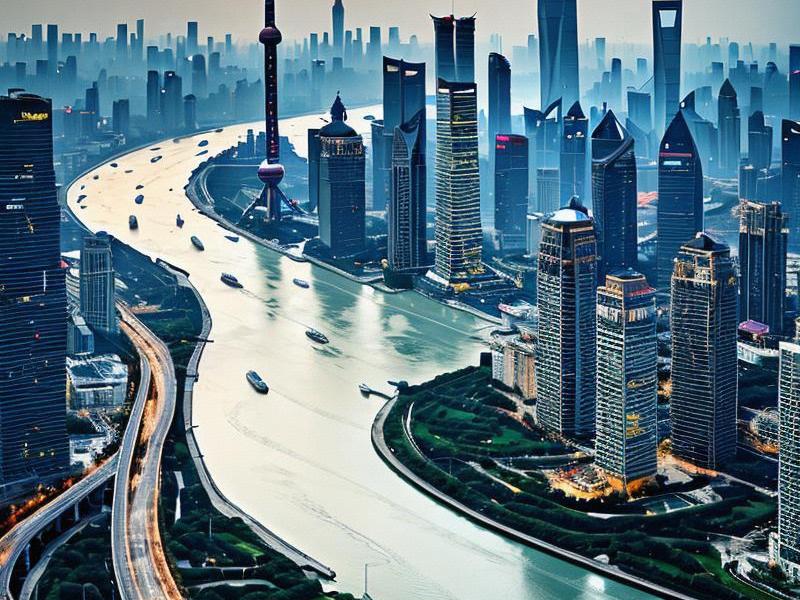This article delves into the unique development of Shanghai and its surrounding areas, exploring the economic progress, urbanization trends, and cultural exchanges within the Yangtze River Delta region. By examining the latest data and case studies, we aim to provide a comprehensive understanding of this dynamic and evolving area.

The Shanghai and surrounding areas, encompassing the entire Yangtze River Delta region, have long been a significant hub for economic activity in China. This report aims to provide an in-depth analysis of the current state and future prospects of this vibrant region.
I. Economic Development
The economic landscape of Shanghai and its surrounding areas has undergone remarkable transformation over the past few decades. Once primarily known for its manufacturing base, the region has successfully transitioned into a global center for finance, trade, technology, and innovation.
Shanghai, as the core city of the Yangtze River Delta, continues to lead the nation in terms of GDP growth and foreign investment. Its strategic location at the mouth of the Yangtze River, coupled with its well-developed infrastructure, has made it a magnet for multinational corporations seeking to establish a foothold in China.
The surrounding areas, including Suzhou, Wuxi, Hangzhou, and Ningbo, have also experienced rapid economic growth. These cities have leveraged their respective strengths to develop specialized industries such as high-tech manufacturing, e-commerce, and cultural tourism. For instance, Suzhou is renowned for its advanced semiconductor and electronics industry, while Hangzhou has emerged as a global leader in e-commerce, thanks to the presence of companies like Alibaba.
One of the key drivers of economic growth in the region is the ongoing integration of the Yangtze River Delta. The Chinese government has implemented various policies to promote regional cooperation and coordination, including the establishment of the Yangtze River Delta Integration Development Demonstration Zone. This initiative aims to break down administrative barriers and foster a unified market, enabling the free flow of goods, services, capital, and talent across the region.
爱上海同城对对碰交友论坛
II. Urbanization Trends
Urbanization has been a defining feature of the Shanghai and surrounding areas over the past few decades. The region has witnessed a significant increase in urban population and the expansion of urban areas, driven by rapid economic growth and rural-urban migration.
Shanghai, as the largest city in the region, has undergone remarkable urban transformation. Its skyline is now dominated by modern skyscrapers and iconic landmarks such as the Oriental Pearl Tower and the Shanghai Tower. The city has also invested heavily in public transportation infrastructure, including the Shanghai Metro, which now boasts one of the most extensive networks in the world.
The surrounding areas have also experienced rapid urbanization, with cities like Suzhou, Wuxi, and Hangzhou becoming major urban centers in their own right. These cities have developed comprehensive urban planning strategies to manage growth and ensure sustainable development. For example, Suzhou has implemented strict environmental regulations to preserve its natural beauty while promoting industrial growth.
One of the challenges facing urbanization in the region is the need to balance economic development with social and environmental considerations. The Chinese government has recognized this challenge and has introduced various policies to promote smart and green urbanization. These policies aim to improve the quality of life for residents, reduce environmental impact, and enhance the resilience of urban systems.
上海龙凤419是哪里的
III. Cultural Exchange
The Shanghai and surrounding areas are not only a hub for economic activity but also a melting pot of cultures. The region's strategic location at the crossroads of China and the world has made it a center for cultural exchange and innovation.
Shanghai, with its rich history and cosmopolitan culture, has long been a magnet for artists, writers, and intellectuals from around the world. The city is home to numerous museums, art galleries, theaters, and music venues that showcase a diverse range of cultural expressions. The Shanghai International Film Festival, one of the most prestigious film festivals in Asia, attracts filmmakers and audiences from across the globe.
The surrounding areas also play a crucial role in promoting cultural exchange within the Yangtze River Delta. Cities like Suzhou, Hangzhou, and Ningbo are renowned for their historical and cultural heritage, attracting millions of tourists each year. These cities have invested heavily in cultural tourism infrastructure, including museums, historical sites, and cultural festivals, to preserve and promote their unique cultural identities.
Cultural exchange within the region is further facilitated by the presence of numerous universities and research institutions. These institutions attract students and researchers from around the world, fostering a vibrant academic and cultural environment. The Shanghai Cooperation Organization (SCO) and the Belt and Road Initiative (BRI) have also played a significant role in promoting cultural exchange within the region and beyond.
爱上海同城对对碰交友论坛
IV. Future Prospects
The future of Shanghai and surrounding areas looks promising, with continued economic growth, urbanization, and cultural exchange shaping the region's development trajectory. The Chinese government has set ambitious goals for the Yangtze River Delta, including becoming a global leader in innovation, sustainability, and high-quality development.
To achieve these goals, the region will need to address several key challenges, including environmental sustainability, social equity, and regional coordination. The Chinese government has introduced various policies to address these challenges, including the establishment of green development zones, the promotion of inclusive growth, and the strengthening of regional cooperation.
In conclusion, Shanghai and surrounding areas represent a dynamic and evolving region that is at the forefront of China's economic and cultural development. By leveraging its unique strengths and addressing its challenges, the region has the potential to become a global leader in innovation, sustainability, and high-quality development.